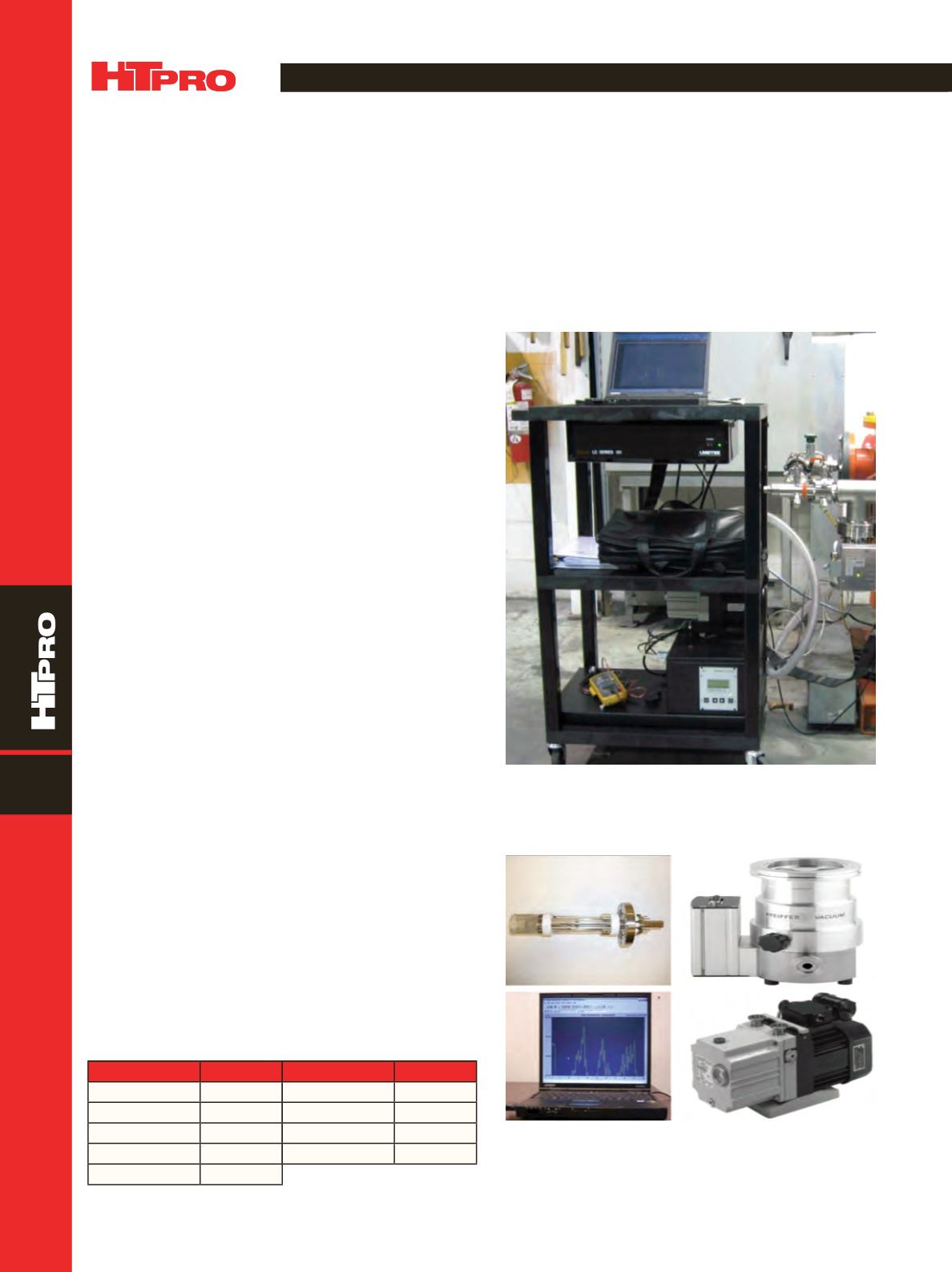

FEATURE
A D V A N C E D M A T E R I A L S & P R O C E S S E S | J U N E 2 0 1 5
4 0
8
RESIDUAL GAS ANALYZER DETERMINES DIFFERENCES IN
GRAPHITE AND ALL-METAL HOT ZONE VACUUM OPERATION
Residual gas analysis shows that graphite is more economical than all-metal design
and is capable of producing contamination-free surfaces.
Trevor Jones* and Reàl J. Fradette,
Solar Atmospheres Inc., Souderton, Pa.
A
residual gas analyzer (RGA) is a type of mass spec-
trometer that can detect atomic mass in the range
of 1 to 300, but is typically used in the 1 to 50 range
(Fig 1). The RGA does not detect solids, only gases with less
than 100 AMU (atomic mass unit). Sampling atmospheric
pressures as low as 5 x 10
−
12
torr is possible, but pressure in
vacuum furnace equipment is typically at the 10
−
6
torr lev-
el. The RGA provides a semiquantitative measurement of
remaining gases in a vacuum system; it does not provide
absolute values, but instead compares relative amounts of
residual gases that remain in the system. RGAs are also used
as sensitive helium leak detectors. Integrity of vacuum seals
and quality of vacuum at pressures below 10
−
5
torr is deter-
mined by checking for air leaks, virtual leaks, and other con-
taminants before a process is initiated.
TYPICAL RGA SETUP
A proper setup for an RGA is to position the sensor to
an extension from the vacuum chamber with a valve, initial-
ly isolating the sensor from the chamber. A turbomolecular
pump backed by an oil-sealed rotary vane pump provides
the vacuum to the sensor. Initially, the valved-off sensor
connection is pumped down to 5 x 10
−
5
torr or lower prior to
opening the valve to themain chamber. Figure 2 shows com-
ponents of the RGA setup.
MOLECULES IN ATMOSPHERE AND VACUUM
There is no such thing as a perfect vacuum, as trace
amounts of gases are always present in a vacuum chamber
or system. A typical atmosphere contains about 1 x 10
20
mol-
ecules/cm
3
, while a typical high vacuum contains about 1 x
10
10
molecules/cm
3
. Residual gasmolecules remaining in the
vacuum systemcan include water vapor (H
2
O). The amounts
and types of gases present in dry atmospheric air are provid-
ed below:
*Member of ASM International and Heat Treating Society
Gas
Vol%
Nitrogen
78.08
Oxygen
20.93
Argon
0.93
Carbon dioxide
0.03
Neon
0.0018
Gas
Vol%
Helium 0.0005
Krypton
0.0001
Hydrogen
0.00005
Xenon
0.0000087
Fig. 1 —
A residual gas analyzer provides a semiquantitative mea-
surement of remaining residual gases in a vacuum system.
Fig. 2 —
Components of a typical RGA setup. Clockwise from top
left: sensor, turbomolecular pump, oil-sealed rotary vane pump,
and computer for recoding and analysis.


















